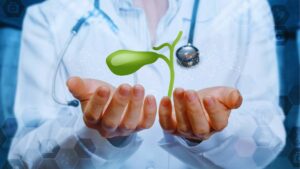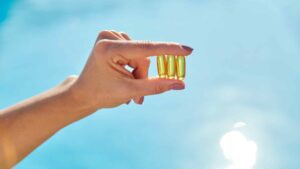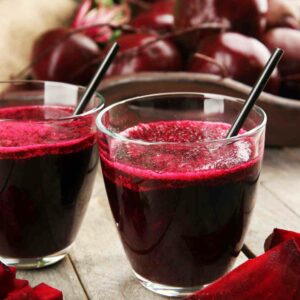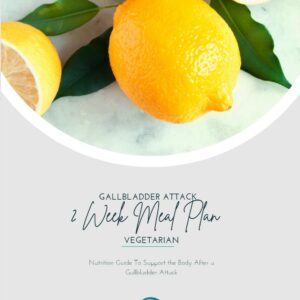What is the Gallbladder and its Function?
When was the first time you learned about the gallbladder and what it did in your body? I can recall my first time was after rushing to the ER wondering what was going on with my body? Truthfully, I had no idea what the gallbladder was at the time nor what purpose it served in my body.
What is the gallbladder?
The gallbladder is a tiny, but mighty pear-shaped organ snuggled in the lower right lobe of the liver. It measures about 3-4 inches and is typically covered by the liver unless filled with stones.
The gallbladder is part of a whole system called the biliary system or biliary tract. The biliary system is a series of ducts that resembles a tree within the liver, gallbladder, and pancreas that empty into the small intestine.
whole system called the biliary system or biliary tract. The biliary system is a series of ducts that resembles a tree within the liver, gallbladder, and pancreas that empty into the small intestine.
The gallbladder, liver, and bile ducts work together to control the flow of bile. Bile is a soapy-like substance that is mostly made of cholesterol, bilirubin, bile acids, phospholipids, water, and minerals. Bile is made in the liver and passes through the first part of the small intestine, and ultimately the gallbladder where the bile is stored, concentrated, and released when you consume fats. Its primary function is to aid in digestion and absorption of fats.
How does the gallbladder work?
The gallbladder’s function is signaled by hormones. Cells in your duodenal walls signal a hormone called cholecystokinin (CCK). Hormone CCK tells your gallbladder to contract, release bile, and signals the muscular sphincter of oddi to relax. When hormone CCK is not signaled, the gallbladder relaxes and fills up with bile.
Gallbladder and Bile Metabolism
Despite the gallbladder being deemed an unimportant organ, it serves an essential role in digestion and bile acid metabolism. Bile serves many important roles in the body. When you consume a fatty meal, the liver continuously produces bile. However, bile is not needed in large amounts all the time, so the excess bile is redirected to the gallbladder. Here, the bile gets concentrated and stored until it’s required.
Fat Digestion
 When you eat a fatty meal, your gallbladder contracts, releasing the concentrated bile through the common bile duct into the small intestine. The bile helps break down the fats into smaller droplets, increasing the surface area for pancreatic enzymes to finish fat digestion. Bile serves an important role in the absorption of fat-soluble vitamins and fatty acids.
When you eat a fatty meal, your gallbladder contracts, releasing the concentrated bile through the common bile duct into the small intestine. The bile helps break down the fats into smaller droplets, increasing the surface area for pancreatic enzymes to finish fat digestion. Bile serves an important role in the absorption of fat-soluble vitamins and fatty acids.
Antimicrobial
Bile is also a form of antimicrobial that helps protect the small intestine from pathogens. Impaired bile flow from either gallbladder dysfunction or after gallbladder removal can cause varying gastrointestinal issues, with small intestinal bacterial overgrowth being a common problem.
Cholesterol Metabolism and Breakdown
 Bile also helps to break down cholesterol. Changes in bile flow and metabolism can often contribute to high cholesterol levels in individuals with gallbladder problems or after cholecystectomy. Supporting biliary output can help improve cholesterol levels in both cases.
Bile also helps to break down cholesterol. Changes in bile flow and metabolism can often contribute to high cholesterol levels in individuals with gallbladder problems or after cholecystectomy. Supporting biliary output can help improve cholesterol levels in both cases.
Detoxification
Bile is also a form of detoxification. It helps break down and move substances like excess toxins, cholesterol, and hormones from the body.
Helps with consistent bowels
Bile also serves as a lubricant. Its main function is the metabolism of fats. Adequate bile production and secretion are needed to help digest fats and maintain regular bowel movements. Changes in bile due to gallbladder dysfunction or cholecystectomy can result in constipation for some individuals due to poor bile output.
Signs of Gallbladder Dysfunction
Signs of gallbladder dysfunction are most often associated with poor tolerance to fats but other signs can be:
- Indigestion after fats
- Abdominal bloating
- Acid reflux/heartburn
- Diarrhea/constipation
- Loose, oily stool
- Clay-colored stool
- Moodiness, irritability
- Low tolerance to alcohol
- Nausea with fatty foods
- Acne along the hairline
- Bad breath
- Itchy skin
- Dry skin
- Brittle nails and hair
Gallbladder Complications
While the gallbladder plays a vital role in digestion, it is susceptible to certain issues that can result in many of the symptoms mentioned above and intolerances to fatty foods. The most common form of gallbladder issues is gallstones. In fact, it is becoming one of the leading gastrointestinal issues today, with an estimated 20-25 million Americans having or developing gallstones.
Gallbladder disease also includes conditions such as:
- Gallstones
- Bile sludge
- Biliary dyskinesia
- Polyps
- Hyperkinetic gallbladder
- Gallbladder inflammation
I’ve learned through experience with gallbladder sludge, biliary dyskinesia, and polyps that a gallbladder diet and eating gallbladder-friendly meals are key to helping avoid these conditions.
Overall, the gallbladder’s role in the digestive process is vital, as it ensures that fats are properly broken down and absorbed, contributing to overall nutrient absorption and maintaining a healthy digestive system. While it’s not considered an essential organ, the gallbladder plays a significant role in digestion, overall metabolic processes, and it’s important we work to try to keep your gallbladder if possible.
3 Tips to Support Gallbladder Function
1.Reduce Gallbladder Stressors in the Diet
Certain diets can lead to a slew of chronic or acute medical problems. But a few diets I’ve learned can lead to an increased risk of gallstone formation are:
- Low-calorie or restricted diets
- Diets high in refined sugars
- Diets low in fiber and high in fat and protein
2.Increase Key Gallbladder Foods
A gallbladder diet that focuses on nourishing your body with whole foods and nutrients is crucial to preventing gallstones and keeping our bodies as healthy as we can. 
My favorite gallbladder-friendly foods are:
- Fibers like colorful fruits, veggies, whole grains, and legumes
- Herbs like peppermint, dandelion, and artichoke
- Cholagogue rich foods: beets, artichoke, apple, cilantro, radish, dandelion
3.Seek Support
As an integrative gallbladder nutritionist, I work with all kinds of individuals to uncover the cause of their gallbladder issues. Diet and lifestyle are the leading cause of many controllable risk factors. Adopting a healthy, balanced diet can significantly help support gallbladder health.
I’ve created a gallbladder support nutrition ebook that’s full of recipes, a grocery list, a summary of gallbladder-friendly foods, and a gallbladder diet to help you avoid gallbladder issues that might arise.
And if you’re ready to take it a step further, you won’t want to miss joining the Gallbladder Saver Society Membership This community of gallbladder warriors helps support you with your gallbladder issues. I offer gallbladder-friendly educational resources and live Q&A sessions to help you get your questions answered and avoid unwanted gallbladder symptoms.
I’m here to help you find the cause of your gallbladder issues. There’s so much I can offer you, and I can’t wait for you to take charge of your gallbladder disease to start feeling your best!
Connect with me today so we can discover YOUR root cause of gallbladder disease. Your gallbladder deserves some love and attention too!
References
Stinton LM, Shaffer EA. Epidemiology of gallbladder disease: cholelithiasis and cancer. Gut Liver. 2012 Apr;6(2):172-87. doi: 10.5009/gnl.2012.6.2.172. Epub 2012 Apr 17. PMID: 2257074
Shaffer EA. Gallstone disease: Epidemiology of gallbladder stone disease. Best Pract Res Clin Gastroenterol. 2006;20(6):981-96. doi: 10.1016/j.bpg.2006.05.004. PMID: 17127183.
Housset C, Chrétien Y, Debray D, Chignard N. Functions of the Gallbladder. Compr Physiol. 2016 Jun 13;6(3):1549-77. doi: 10.1002/cphy.c150050. PMID: 27347902.

